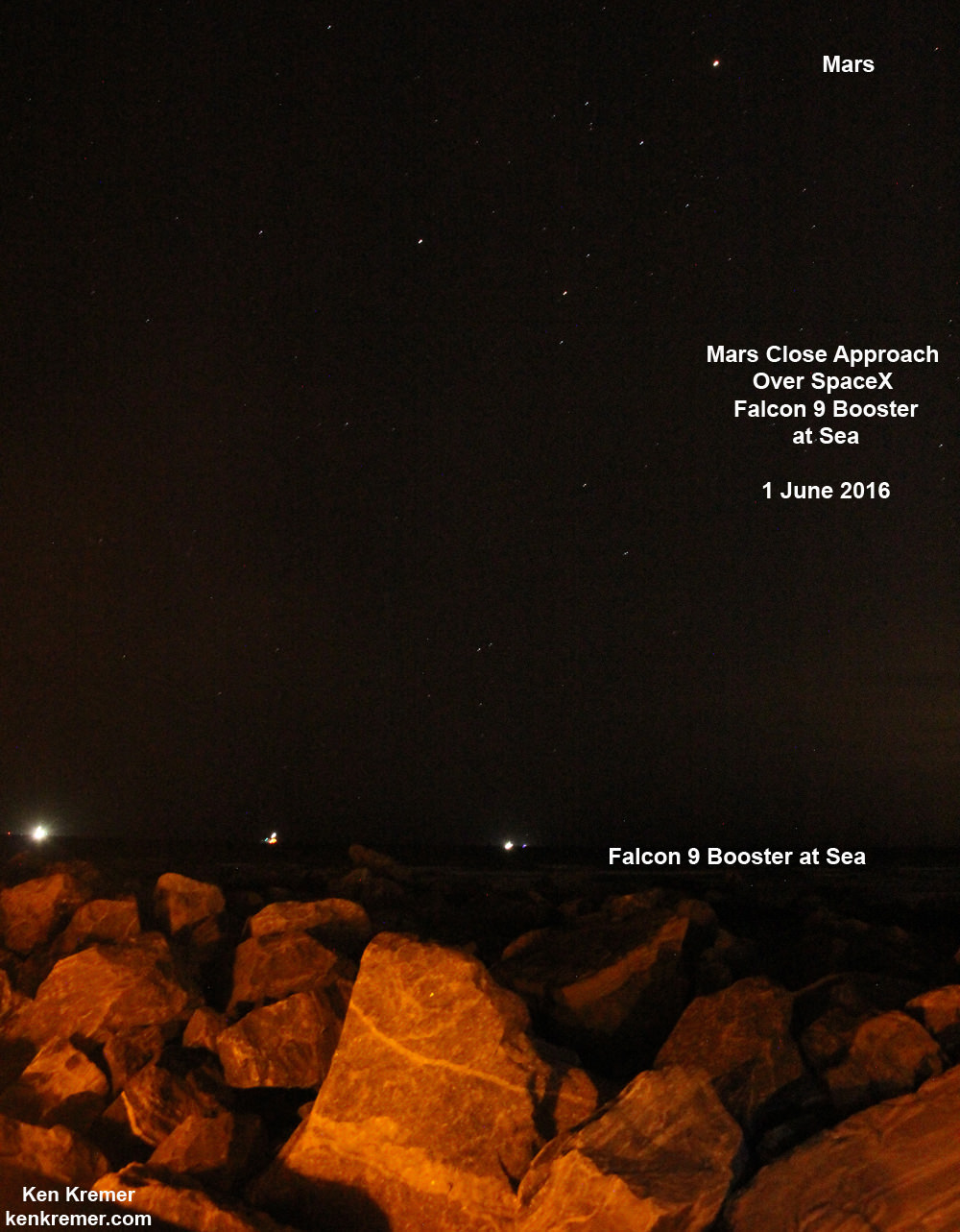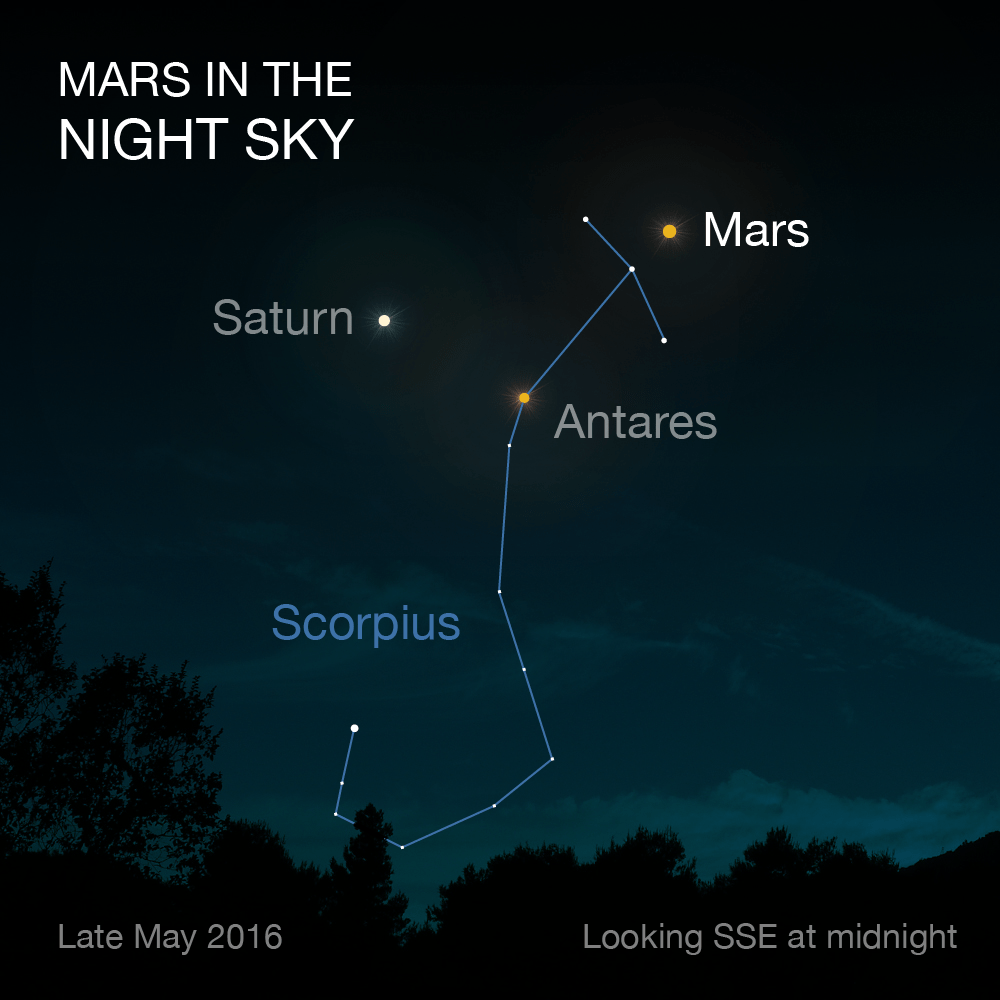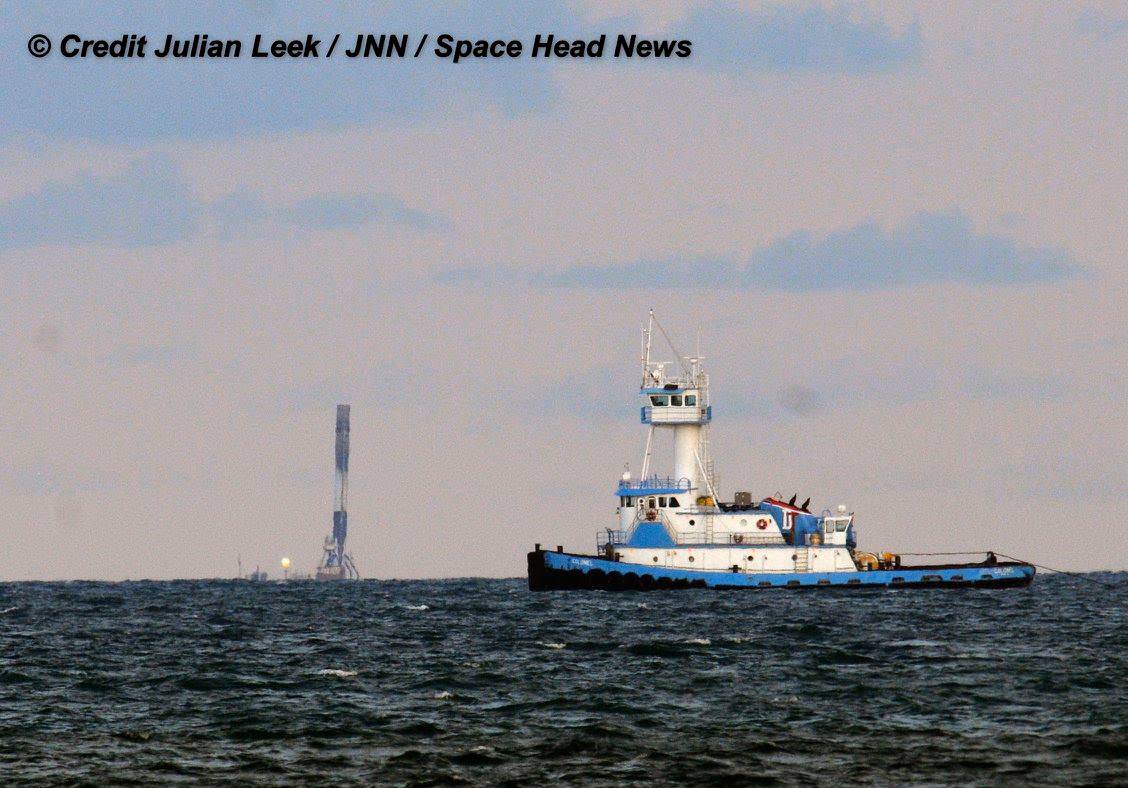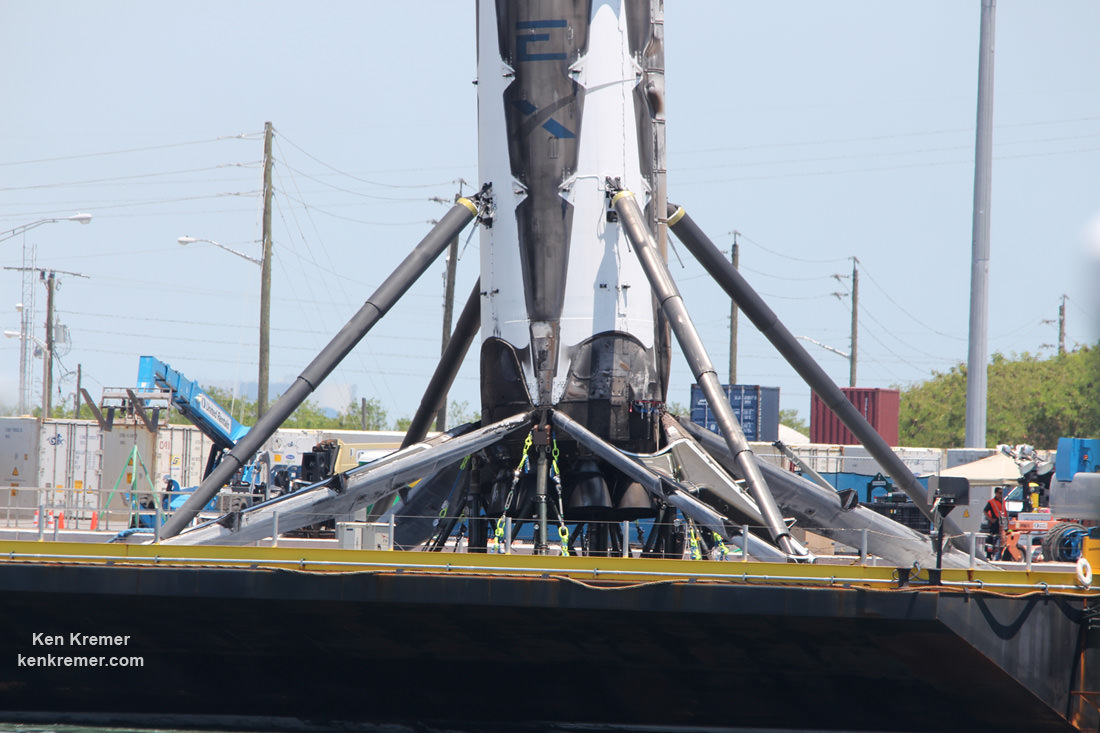
PORT CANAVERAL, FL – As you may have heard its Mars opposition season. What you may not have heard is that Mars made its closest Earth approach high in the Sunshine states nighttime skies coincidentally at the same time as a sea landed SpaceX Falcon 9 was visible just offshore floating on the horizon below.
Rather miraculously this regular natural occurrence of the dance of the planets Earth and Mars making a close embrace as they orbit around our Sun, was taking place simultaneously with a most unnatural event – namely the return of a used SpaceX Falcon 9 landed on a platform at sea that was briefly hugging the Florida coastline.
And better yet you can see them celebrating this first-of-its-kind celestial event together in the photo above of ‘Mars Close Approach over Falcon’ – captured by this author around 11 p.m. EDT on Wednesday, June 1 from the rock wall along Jetty Park Pier in Port Canaveral, Fl.
By sheer coincidence, the Red Planet was making its closest approach to Earth of this orbital cycle just as the most recently launched and recovered SpaceX Falcon 9 first stage booster was arriving just offshore of Cocoa Beach and the Florida Space Coast earlier this week.
As luck would have it, when I ventured out to watch the boosters hoped for nighttime arrival from Jetty Park Pier in Port Canaveral on Wednesday, June 1, I noticed that Mars and the floating Falcon 9 were lined up almost perfectly.
Mars is visible at the head of the large constellation Scorpius.
The Falcon 9 was standing atop the droneship upon which it had landed on May 27 while it was stationed approximately 420 miles (680 kilometers) off shore and east of Cape Canaveral, Florida, surrounded by the vastness of the Atlantic Ocean.
The SpaceX Falcon 9 began its rapid journey to space and back roaring to life at 5:39 p.m. EDT last Friday, May 27, from Space Launch Complex-40 at Cape Canaveral Air Force Station, FL, ascending into sky blue sunshine state skies.
The Falcon 9 was carrying the Thaicom-8 telecommunications satellite to orbit.
On Wednesday night, June 1, Mars was high in the southern night sky, shining brightly almost directly over the spent Falcon 9 booster sailing some 3 miles (5 km) offshore of Cocoa Beach.
Thankfully the weather gods even cooperated by delivering crystal clear nighttime skies.
So with Mars at Opposition and Falcon 9 in view and while awaiting the droneship bringing the booster into Port Canaveral I took some exposure shots of this first totally unique opportunity.
Mars Close Approach took place on May 30, 2016. That is the point in Mars’ orbit when it comes closest to Earth.
The Red Planet was only 46.8 million miles (75.3 million kilometers) from Earth.
“Mars reaches its highest point around midnight — about 35 degrees above the southern horizon, or one third of the distance between the horizon and overhead,” according to a NASA description and the graphic shown below.

Mars closest approach to Earth this cycle is May 30, 2016. That is the point in Mars’ orbit when it comes closest to Earth. Mars will be at a distance of 46.8 million miles (75.3 million kilometers). Credit: NASA/JPL-Caltech
Mars is currently visible for much of the night.
Mars oppositions happen about every 26 months when Mars and the sun are on directly opposite sides of Earth.
The 156 foot tall Falcon 9 booster had landed atop the specially designed SpaceX ‘droneship’ named “Of Course I Still Love You” or “OCISLY” less than 9 minutes after the May 27 blastoff.

The Thaicom-8 mission marked the third time SpaceX nailed a booster landing on an ocean going platform.
But unlike the prior two sea landings, this booster came to rest at noticeable tilt.
This caused SpaceX some headaches and concern it might fall over and be destroyed in transit before reaching land.
So the booster didn’t make it back into port Wednesday night as onlookers had hoped. And SpaceX did not announce a return schedule.
It actually would up station keeping and hugging the shoreline for nearly 2 extra days while workers stabilized the booster.

The 15 story tall spent first stage was secured with multiple tie downs to the droneships deck.

As I witnessed and reported here, the booster finally sailed triumphantly into the mouth of Port Canaveral around lunchtime on Thursday, June 2.

Mars and the recovered Falcon 9 actually tie in rather neatly.
The SpaceX rockets launch and recovery technology are all being developed so they will one day lead to establishing a ‘City on Mars’ – according to the SpaceX’s visionary CEO and founder Elon Musk.
Musk aims to radically slash the cost of launching future rockets by recycling them and using them to launch new payloads for new paying customers.
Musk hopes to launch humans to Mars by the mid-2020s.
And this author is also a well known Mars lover.

Watch for Ken’s continuing on site reports direct from Cape Canaveral and the SpaceX launch pad.
Stay tuned here for Ken’s continuing Earth and planetary science and human spaceflight news.
………….
Learn more about SpaceX Falcon 9 rocket, ULA Atlas rocket, Orbital ATK Cygnus, ISS, Boeing, Space Taxis, Mars rovers, Orion, SLS, Antares, NASA missions and more at Ken’s upcoming outreach events:
June 8/9: “SpaceX, ULA, SLS, Orion, Commercial crew, Curiosity explores Mars, Pluto and more,” Kennedy Space Center Quality Inn, Titusville, FL, evenings

I thought at first they were simply lowering the booster to a horizontal position… but it landed that way? Geeze, if the seas had been a little rougher or big wind come up – kerplop? Was the anomaly due to a strut failure? A leak? Or a deck failure aboard “You know I”ll always lover you”? Live and learn… eh?
It landed nearly at max speed, thus the sway
It landed nearly at max speed, thus the sway